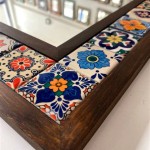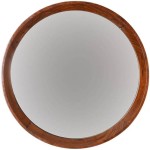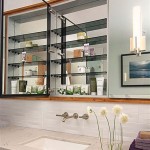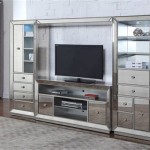How to Make an Antique Mirror Effect
The antique mirror effect, characterized by mottled, aged patches and a softer reflection than a modern mirror, can add a touch of vintage charm to any space. This effect can be achieved through various techniques, primarily by applying chemical solutions to the mirror's silver backing to induce corrosion. This article details the steps involved in creating this effect.
Before starting, gather the necessary materials and equipment. These include the mirror to be antiqued, safety goggles, gloves, a respirator mask, drop cloths, painter's tape, spray bottles, clean cloths, steel wool, and the chemical solutions. Ensure the work area is well-ventilated due to the use of chemicals.
The chemical solutions used to create the antique effect vary, but common options include hydrochloric acid, muriatic acid, vinegar, and commercially available antiquing solutions. The concentration of the acid determines the speed and intensity of the antiquing process. Stronger acids will produce a more dramatic effect more quickly, but also pose a greater risk. Always prioritize safety by researching the specific chemical's safety data sheet (SDS) and following the manufacturer's instructions.
Preparation of the mirror is crucial for a successful outcome. Thoroughly clean the mirror surface with glass cleaner and ensure it is completely dry. Any remaining dirt or residue can interfere with the chemical reaction and create uneven antiquing. Apply painter's tape to any sections of the mirror that should remain unaffected by the antiquing process, such as the frame or specific design elements.
The chosen antiquing solution can be applied using various methods. Spraying the solution offers a more even distribution for a uniformly aged look. Dabbing with a cloth or sponge can create a more textured, variegated appearance. Alternatively, the mirror can be submerged in a bath of the solution for a consistent effect, although this method requires a suitable container and careful handling of the large volume of chemicals.
The reaction time depends on the desired level of antiquing and the strength of the solution. Closely monitor the process, checking regularly for the desired effect. The reaction can be stopped at any point by rinsing the mirror thoroughly with clean water. For milder solutions like vinegar, the reaction can take several hours or even overnight. Stronger acids may only require a few minutes.
Once the desired antiquing effect is achieved, neutralize the chemical reaction by rinsing the mirror thoroughly with water. This step is crucial to halt the corrosive action of the chemicals and prevent further damage to the mirror. After rinsing, thoroughly dry the mirror surface.
After the mirror has dried, the newly antiqued surface can be further refined. Steel wool can be used to gently buff specific areas, highlighting the aged appearance or creating variations in the effect. This step allows for artistic control and customization of the final result.
A protective sealant should be applied to preserve the antique finish and prevent further corrosion. A clear acrylic sealant is a suitable option. Applying the sealant with a soft brush in thin, even coats is recommended. Allow each coat to dry completely before applying the next.
Different antiquing solutions create distinct effects. Hydrochloric and muriatic acids create a more dramatic, heavily aged look. Vinegar produces a subtler, more gradual antiquing. Experimentation with different solutions on small mirror samples beforehand is advisable to determine the desired effect and gain practice with the process.
Commercial antiquing solutions are also available, offering a pre-mixed, ready-to-use option. These solutions often come with specific instructions that should be followed carefully. The advantages of commercial solutions include consistent results and potentially safer handling compared to working with raw acids.
Safety should be paramount throughout the process. Always wear appropriate safety gear, including gloves, goggles, and a respirator mask, especially when working with acidic solutions. Work in a well-ventilated area to avoid inhaling fumes. Dispose of chemical waste responsibly according to local regulations.
Achieving the desired antique mirror effect requires patience and careful observation. The process involves variables such as the chemical solution used, application method, and reaction time. Practicing on smaller mirror samples allows for experimentation and refinement of the technique before working on the final piece.
Variations in the antiquing process can be introduced to create unique effects. Masking techniques can be employed to create patterns or borders. Layering different solutions can produce depth and complexity in the antiquing. The angle of the mirror during the reaction can also influence the final result, allowing gravity to create subtle variations in the pattern.
The antique mirror effect can enhance a variety of decorative styles. From adding a touch of vintage elegance to a bathroom to creating a focal point in a living room, the antiqued mirror offers a versatile design element. Its unique reflective qualities and aged patina can complement both traditional and contemporary interiors.

How To Antique A Mirror Easy No Scratching The Navage Patch

The Ultimate Guide On Diy Antique Mirrors So Much Better With Age

Diy Antique Mirror Easy To Do And Looks Authentic My Creative Days

The Ultimate Guide On Diy Antique Mirrors So Much Better With Age

How To Antique A Mirror From The Front With Paint Average But Inspired

Antiqued Mirror Effect Thicketworks

How To Antique A Mirror Easy No Scratching The Navage Patch

How To Antique A Mirror Tutorial Jenna Sue Design

How To Create An Antique Mirror

Antiqued Mirror Effect Thicketworks








